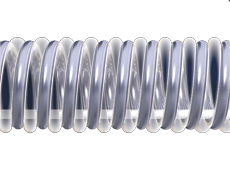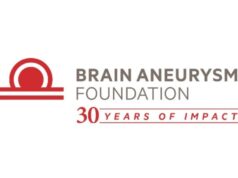
The GREAT randomised controlled trial has confirmed that better outcomes can be achieved with hydrogel coils compared to bare platinum coils for the treatment of medium-sized intracranial aneurysms. The study results were presented at the International Stroke Conference (ISC; 22–24 February, Houston, USA) by Christian Taschner (University of Freiburg, Germany).
Since its introduction, aneurysm coiling has become the treatment option of choice in patients with ruptured and unruptured intracranial aneurysms. A major drawback of this technique, however, has been the relatively high recanalisation rate which makes it necessary to retreat a number of patients, taking an additional risk for the second treatment, Taschner explained. “Various modifications to bare platinum coils have been brought to clinical practice, but most of them failed to show any clinical efficacy. The only type of coils that proved efficacious in randomised controlled trials is the hydrogel coil. This hydrogel coil consists of a platinum coil with a polymer, which on contact with liquid, amplifies and thereby increases the packing density of a coiled aneurysm,” he said.
In the HELPS study published in 2011 in the Lancet, the use of the hydrogel coil was associated with lower recanalisation rates when compared to bare platinum coils, but limitations in the coil such as coil stiffness and time constriction for delivery have prevented their broader clinical use. In response, a second-generation hydrogel coil has been designed and brought to clinical practice. The polymer filament in this second-generation hydrocoil “is much smaller now which makes the coil softer and you no longer have any time restrictions for placing the coil,” Taschner explained.
The aim of the GREAT investigator-initiated, prospective, randomised, multicentre trial was to establish whether the use of the second-generation hydrogel coils for the treatment of intracranial aneurysms improves outcomes compared with the use of bare platinum coils. The study was conducted in 15 centres in France and seven centres in Germany.
In terms of inclusion criteria, the aneurysm size was limited to 4–12mm, the age of patients was between 18 and 75 years, and patients with ruptured aneurysms were included. Exclusion criteria were the use of other bioactive coils or volumetric coils, flow diverters or other intra-aneurysmal flow disruptors.
Patients were allocated by block randomisation in a 1:1 ratio, stratified by ruptured status, and were masked to allocation. The intervention group received second-generation hydrogel coils (HydroSoft/HydroFrame, Microvention) and at least 50% of the coils administered needed to be hydrogel coils. In the control group, any bare platinum coils were permitted, as were assist devices such as remodelling balloons or endovascular stents. Clinical assessment was done at the time of randomisation and at six and 18 months after treatment by the treating physician. Angiographic assessment was done before treatment, immediately after treatment, at six months and at 18 months. The follow-up assessments were done by an independent core lab masked to both treatment allocation and treatment received.
The primary endpoint was an adverse composite endpoint which consists of major aneurysm recurrence on follow-up angiography at 18 months; retreatment for major recurrences within 18 months; morbidity which prevented angiographic follow-up; and any death during follow-up. Secondary endpoints were the clinical outcomes at six and 18 months using the modified Rankin scale (mRS), total coil length deployed, and coil packing density obtained. Statistical analysis was based on the intention-to-treat principle, however after the publication of the HELPS study, the sample size was amended and patients who received flow diverter or disruptor treatment were excluded.
Between October 2009 and February 2014, 513 patients were randomised, and after exclusion, 243 patients were analysed in the hydrogel arm and 241 patients were analysed in the bare platinum arm. The main clinical characteristics were evenly distributed at baseline between the two arms (mean age=52 years in both arms; 71% female patients in the hydrogel arm vs. 67% female in the bare platinum arm; 42% ruptured aneurysms in hydrogel arm vs. 44% in the bare platinum arm; mean aneurysm size=6.8mm in the hydrogel arm vs. 7.1mm in the bare platinum arm; and aneurysm located in the anterior circulation in 89% of both arms). Adjunctive devices included balloon remodelling (52% in the hydrogel arm vs. 45% in the bare platinum arm) and stent assisted coiling (23% in the hydrogel arm vs. 21% in the bare platinum arm).
Adverse events were slightly higher in the bare platinum arm (thromboembolism=8 vs. 12; aneurysm rupture=3 vs. 7; vessel occlusion=1 vs. 3; vessel perforation=1 vs. 1; and vessel dissection=0 vs. 0 in the hydrogel arm and bare platinum arm, respectively).
“In terms of the primary endpoint at 18 months, the major recurrence rate was higher in the bare platinum arm (18%) than in the hydrogel arm (12%). The same was true for the retreatment rate which was higher in the bare platinum arm (6%) than in the hydrogel arm (3%). The mortality rate was evenly distributed (mRS 3–5=3 vs. 0; mRS 6=7 vs. 10, in the hydrogel and bare platinum arms, respectively),” Taschner reported.
Forty-five patients in the hydrogel group and 66 patients in the control group had an adverse composite primary outcome, which leads to a reduction in the proportion of adverse composite primary outcomes with hydrogel—stratified by ruptured status—of 8.4%. The subgroup analysis showed a strong trend favouring hydrogel coils, and this is particularly pronounced in patients with unruptured aneurysms and with aneurysms below 10mm in size.
Clinical outcome at 18 months, Taschner added, was comparable to other studies and comparable between the two arms.
Finally, for the technical outcome the investigators calculated the mean packing density and found that the packing density in the hydrogel arm (39%) was significantly higher than in the bare platinum arm (31%), and “this seems to have translated into a more stable aneurysm rate,” Taschner said.
He concluded that coil embolisation with second generation hydrogel coils decreases adverse outcomes compared with bare platinum coils in endovascular treatment of medium-sized intracranial aneurysms.
The study was entirely funded by Microvention, but the sponsor had no role in study design, data collection, data analysis or data interpretation or the writing of the report.












